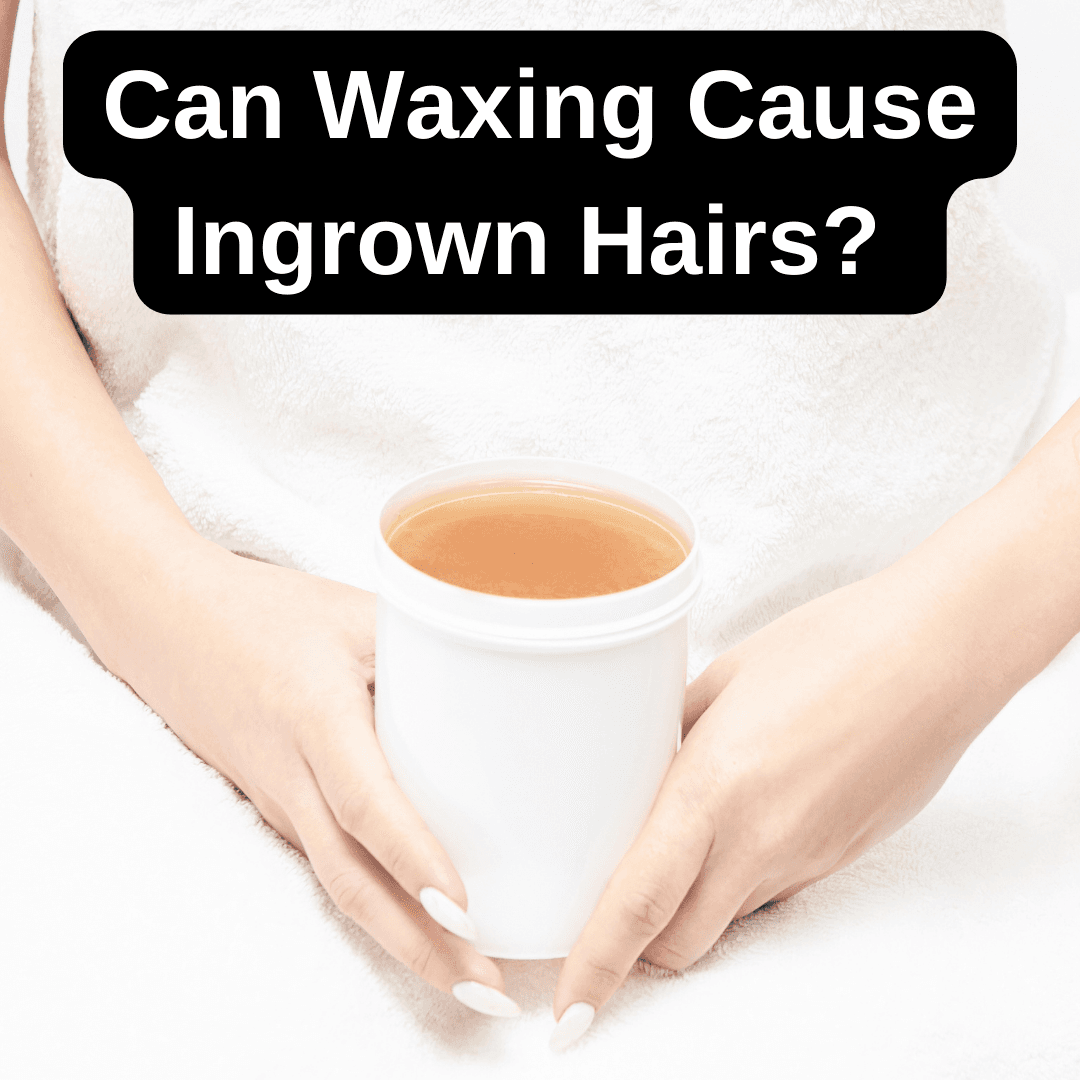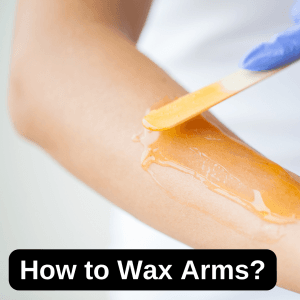Waxing is a popular hair removal method known for its long-lasting results, but it can also lead to some unwanted side effects. One of the most common concerns people have after waxing is whether it can cause ingrown hairs. In this comprehensive guide, we’ll explore whether waxing can lead to ingrown hairs, why it happens, and what you can do to prevent and treat them effectively.
What Causes Ingrown Hairs After Waxing?
Ingrown hairs occur when a hair curls back or grows sideways into the skin instead of rising up from the follicle. This can lead to inflammation, redness, and sometimes even pain. But why does this happen after waxing?
According to Wikipedia, ingrown hairs occur when a hair curls back or grows sideways into the skin instead of emerging properly. This can cause inflammation, redness, and irritation.
Why Does Waxing Cause Ingrown Hairs?
Waxing removes hair from the root, which is effective for smooth skin, but it also leaves the hair follicles exposed. As new hair begins to grow, it may struggle to break through the surface of the skin, especially if there is dead skin blocking its path. This can cause the hair to curl back into the follicle, leading to an ingrown hair.
| Cause | Explanation |
| Improper Technique | Pulling the wax strip at the wrong angle can break hair below the skin surface. |
| Coarse Hair | Thicker hair types are more prone to curling back into the skin after waxing. |
| Lack of Exfoliation | Dead skin cells can block hair follicles, causing ingrown hairs. |
| Sensitive Skin | Delicate skin is more prone to irritation, increasing the risk of ingrown hairs. |
- Can a Bad Wax Cause Ingrown Hairs?
Yes, improper waxing techniques or using low-quality wax can increase the risk of ingrown hairs. If the hair is not removed cleanly or if the wax strip is pulled off at the wrong angle, it can break the hair below the skin’s surface, increasing the likelihood of it growing back into the skin.
Waxing removes hair from the root, which can sometimes cause new hair to grow improperly. When the hair regrows, it may curl back into the skin instead of growing outward, leading to ingrown hairs. According to a study published in the Journal of Dermatologic Surgery (2020), hair removal methods that extract hair from the root, such as waxing, have a higher risk of causing ingrown hairs. The study found that 35% of participants reported frequent ingrown hairs after waxing treatments. This happens because the removal process can lead to inflammation, causing the hair to become trapped under the skin.
To prevent this, it’s crucial to exfoliate and moisturize the skin before and after waxing.
Does a Brazilian Wax Give You Ingrown Hairs?
Brazilian waxing is one of the most popular types of waxing, but it’s also a procedure that can lead to ingrown hairs, especially in sensitive areas like the bikini line.
- Can a Brazilian Wax Cause Ingrown Hairs?
The skin in the bikini area is particularly delicate, making it more prone to irritation and ingrown hairs. The hair in this area is also coarser, which increases the likelihood of it becoming trapped under the skin after waxing. - Does Waxing the Bikini Line Cause Ingrown Hairs?
Yes, waxing the bikini line can cause ingrown hairs, especially if the skin is not properly exfoliated before the procedure. Exfoliating helps remove dead skin cells, reducing the risk of hair getting trapped under the surface.
Does Epilating Cause More Ingrown Hairs Than Waxing?
When it comes to hair removal, there are several popular methods to choose from, with epilating and waxing being among the most common. However, each technique comes with its own set of pros and cons, especially when it comes to the risk of developing ingrown hairs. Let’s dive deeper into how these methods compare and why epilating may result in a higher chance of ingrown hairs than waxing.
Epilator vs. Waxing: Which Causes More Ingrown Hairs?
While both epilators and waxing techniques are designed to remove hair from the root, they do so in fundamentally different ways. Waxing involves applying a sticky substance to the skin, which adheres to the hair, and then quickly pulling it off in the opposite direction of hair growth. This process tends to extract hair straight from the follicle in one swift motion. In contrast, an epilator uses multiple tiny tweezers that rotate rapidly to pluck hair from the root, but often at different angles.
- Why Epilating Causes More Ingrown Hairs: The key difference lies in how the hair is pulled out. Epilators can sometimes extract hair at an awkward angle, causing the hair to break off slightly below the surface rather than being pulled out entirely. When the hair regrows, it may struggle to break through the skin’s surface, causing it to curl back into the skin and form an ingrown hair. Additionally, the mechanical action of the epilator can create micro-tears in the skin, which can become a barrier to hair growth, leading to more ingrown hairs.
- Waxing’s Advantage: Because waxing pulls hair in a more uniform direction and extracts it entirely, it tends to leave behind a cleaner follicle. This reduces the likelihood of hair curling back into the skin, especially when the procedure is performed correctly by a professional. That said, waxing is not completely free of risks, especially if done incorrectly or if proper aftercare is not followed.
If you’re considering electrolysis as an alternative to waxing or epilating, learn more about the required number of sessions in our detailed guide: How Many Sessions for Electrolysis?
Does Epilating Cause Ingrown Hairs? Absolutely, and Here’s Why
Yes, using an epilator can increase the risk of ingrown hairs, particularly if the proper skin preparation and aftercare steps are not taken. The epilator’s rotating tweezers can sometimes miss pulling the entire hair out from the root, especially if the hair is very fine or short. This incomplete removal leaves behind a hair tip that can easily get trapped beneath the surface of the skin.
Here’s a more detailed explanation of why epilating can cause ingrown hairs and how to minimize the risk:
- Improper Skin Preparation: One of the main reasons epilating can lead to ingrown hairs is due to inadequate skin preparation. Before using an epilator, it’s essential to exfoliate the area to remove dead skin cells and clear any blockages in the hair follicles. Without exfoliation, dead skin cells can trap newly growing hairs, causing them to grow sideways under the skin.
- How to Exfoliate: Use a gentle exfoliating scrub or a soft-bristle brush before epilating. Focus on areas like the legs, underarms, and bikini line where ingrown hairs are more common. Exfoliating 2-3 times a week can help keep your skin clear and prevent ingrown hairs.
- Pro Tip: Try using a chemical exfoliant containing salicylic acid or glycolic acid if you have sensitive skin. These acids help dissolve dead skin cells without the need for scrubbing, which can sometimes irritate the skin.
- Moisturizing Is Key: Keeping your skin well-hydrated is crucial when epilating. Dry skin can increase friction, making it more difficult for the epilator to pull hair out smoothly. This can cause the hair to break off under the skin, leading to ingrown hairs.
- Best Moisturizers to Use: Opt for non-comedogenic, fragrance-free moisturizers that won’t clog pores. Ingredients like aloe vera, hyaluronic acid, and shea butter are excellent for keeping the skin soft and supple.
- Proper Technique When Using an Epilator: The way you use your epilator can also impact the likelihood of developing ingrown hairs.
- Technique Tips: Always hold the epilator at a 90-degree angle to the skin and move it in the direction of hair growth. Avoid pressing the device too hard against the skin, as this can cause micro-tears and increase the risk of hair becoming trapped.
- Slow and Steady Wins the Race: Don’t rush through the process. Move the epilator slowly over the skin to give the tweezers enough time to grab the hair and pull it out cleanly. Going too fast can lead to hairs breaking off at the surface instead of being removed from the root.
- Aftercare to Prevent Ingrown Hairs: Once you’ve finished epilating, it’s crucial to take care of your skin to prevent irritation and ingrown hairs.
- Apply a Soothing Lotion: After epilating, use a soothing, alcohol-free lotion to calm any redness or irritation. Products containing tea tree oil, witch hazel, or aloe vera can reduce inflammation and prevent infection.
- Avoid Tight Clothing: For at least 24 hours after epilating, avoid wearing tight clothing that can rub against the skin and cause friction. This can irritate freshly epilated skin and increase the risk of ingrown hairs, especially in sensitive areas like the bikini line.
- Use an Ingrown Hair Serum: If you’re prone to ingrown hairs, consider using a specialized serum containing salicylic acid to keep pores clear and prevent new hairs from becoming trapped.
- Regular Exfoliation and Hydration for Maintenance: To prevent ingrown hairs long-term, maintain a consistent exfoliation and hydration routine. This keeps the skin smooth and reduces the chances of hair becoming trapped beneath the surface.
- Exfoliate 2-3 Times a Week: Regular exfoliation helps remove dead skin cells and keep hair follicles clear. Use a gentle scrub or a chemical exfoliant to prevent irritation.
- Hydrate Daily: Applying a hydrating lotion daily will keep your skin soft, reducing the risk of hair becoming trapped beneath dry, flaky skin.
By following these steps and understanding the differences between waxing and epilating, you can choose the hair removal method that works best for you while minimizing the risk of ingrown hairs. Remember, while epilating is convenient and effective for many, it requires a bit more care to prevent unwanted side effects like ingrown hairs.
How to Prevent Ingrown Hairs After Waxing
Prevention is key when it comes to dealing with ingrown hairs. By taking a few simple precautions, you can significantly reduce the chances of developing ingrown hairs after waxing.
Pre-Waxing Preparation Tips to Avoid Ingrown Hairs
- Exfoliate your skin 24-48 hours before waxing to remove dead skin cells and allow hair to grow out more easily.
- Take a warm shower to open up your pores and soften the skin.
- Avoid applying heavy lotions or oils to the skin before waxing, as these can clog pores.
Best Practices After Waxing to Prevent Ingrown Hairs
- Moisturize with a gentle, fragrance-free lotion to soothe the skin and keep it hydrated.
- Wear loose clothing to avoid friction, especially after a Brazilian wax.
- Use an ingrown hair prevention serum with ingredients like salicylic acid to keep pores clear.
How to Treat Ingrown Hairs Caused by Waxing
If you already have ingrown hairs, don’t worry—there are effective treatments to reduce discomfort and prevent further issues.
| Treatment Method | How It Helps |
| Warm Compress | Softens the skin and helps bring the hair to the surface. |
| Gentle Exfoliation | Removes dead skin cells, reducing blockage in hair follicles. |
| Topical Treatments (Salicylic Acid) | Reduces inflammation and helps release trapped hair. |
| Tea Tree Oil | Natural antiseptic that helps reduce redness and irritation. |
Effective Remedies for Ingrown Hairs
Ingrown hairs can be bothersome and sometimes painful, but with the right remedies, they can be managed effectively. Below are some tried-and-true methods to alleviate and prevent ingrown hairs, keeping your skin smooth and irritation-free.
- Warm Compress: Soften the Skin and Relieve Discomfort
Applying a warm compress is one of the simplest and most effective ways to treat ingrown hairs. The warmth helps to soften the skin, encouraging the trapped hair to move closer to the surface. This can make it easier for the hair to emerge naturally without the need for manual extraction.
- How to Use a Warm Compress: Soak a clean washcloth in hot (but not scalding) water, wring out the excess water, and place it over the affected area for 5-10 minutes. Repeat this process two to three times a day. The heat will help reduce inflammation and open up the pores, making it easier for the ingrown hair to release.
- Add a few drops of chamomile or lavender essential oil to the water for an extra soothing effect. These oils have natural anti-inflammatory properties that can help reduce redness and irritation.
- Exfoliate Gently: Remove Dead Skin Cells Without Irritation
Exfoliation is key in preventing and treating ingrown hairs. When dead skin cells accumulate on the surface, they can block hair follicles, trapping hairs beneath the skin. However, it’s crucial to exfoliate gently to avoid further aggravating the skin.
- How to Exfoliate Properly: Use a gentle exfoliating scrub or a soft-bristled brush to remove dead skin cells. Focus on circular motions, especially in areas prone to ingrown hairs like the bikini line, legs, and underarms. Exfoliate 2-3 times a week, depending on your skin’s sensitivity.
- DIY Exfoliating Scrub Recipe: Mix 1 tablespoon of sugar with 1 tablespoon of coconut oil and a few drops of tea tree oil. The sugar acts as a natural exfoliant, while coconut oil moisturizes, and tea tree oil helps reduce inflammation.
- Avoid harsh scrubs or over-exfoliating, as this can lead to micro-tears in the skin, increasing the risk of irritation and infections. If you prefer more natural hair removal methods, sugar waxing is a great option—and there’s even a simple recipe that doesn’t require lemon juice: https://www.epilationworld.com/sugar-wax-without-lemon/
- Topical Treatments: Use Serums and Creams to Reduce Inflammation
Using targeted topical treatments can be highly effective in reducing inflammation and preventing future ingrown hairs. Look for products containing salicylic acid, glycolic acid, or tea tree oil, as these ingredients help to exfoliate the skin, clear out clogged pores, and reduce redness.
- Salicylic Acid: This beta-hydroxy acid penetrates deep into the pores, dissolving oil and dead skin cells that can block hair follicles. Applying a serum with salicylic acid after waxing or shaving can prevent ingrown hairs from forming.
- Tea Tree Oil: Known for its natural antibacterial and anti-inflammatory properties, tea tree oil can soothe the skin and reduce the risk of infections associated with ingrown hairs. Dilute a few drops with a carrier oil (like jojoba or almond oil) and apply it directly to the affected area.
- Aloe Vera Gel: For those with sensitive skin, aloe vera can provide gentle relief. It helps reduce inflammation, hydrates the skin, and speeds up healing.
- For best results, apply topical treatments immediately after hair removal and continue using them a few times a week to keep your skin smooth and ingrown-hair free.
- Use Ingrown Hair Prevention Pads or Serums
Many over-the-counter products are designed specifically to prevent and treat ingrown hairs. These pads or serums often contain a blend of exfoliating acids and soothing agents that help keep the skin clear.
- How to Use Prevention Pads: Simply swipe the pad over clean, dry skin after shaving or waxing. The acids in the pad will help dissolve dead skin cells, while the soothing ingredients calm any irritation.
- Popular Ingredients to Look For: In addition to salicylic acid, look for glycolic acid, witch hazel, and allantoin. These ingredients work together to keep pores clear and reduce the chances of ingrown hairs.
- Moisturize Regularly to Keep Skin Soft and Supple
Dry skin can exacerbate the problem of ingrown hairs by making it harder for new hair growth to break through the surface. Keeping your skin well-moisturized can help prevent this issue.
- Best Moisturizers for Preventing Ingrown Hairs: Opt for lightweight, non-comedogenic moisturizers that contain hydrating ingredients like hyaluronic acid, glycerin, or ceramides. Avoid heavy creams that might clog pores.
- DIY Hydrating Lotion: Mix equal parts aloe vera gel and rose water for a lightweight moisturizer that soothes and hydrates without leaving a greasy residue.
- Apply moisturizer immediately after showering when your skin is still damp to lock in moisture.
By incorporating these remedies into your routine, you can effectively prevent and treat ingrown hairs, leading to smoother, healthier skin.
If you’re concerned about preventing ingrown hairs after waxing or epilating, this detailed guide compares both methods and offers expert tips.
Do Tweezing and Plucking Cause Ingrown Hairs?
Plucking or tweezing hair can also lead to ingrown hairs, especially if the hair breaks off below the skin’s surface. It’s best to avoid tweezing, especially in sensitive areas like the bikini line, to prevent irritation.
- Does Shaving or Waxing Cause More Ingrown Hairs?
Shaving is more likely to cause ingrown hairs than waxing because it cuts the hair at the surface, making it easier for the hair to grow back into the skin. Waxing, on the other hand, removes hair from the root, reducing—but not completely eliminating—the risk of ingrown hairs.
Common Myths About Ingrown Hairs and Waxing
There are many misconceptions about waxing and ingrown hairs. Let’s clear up some of the most common myths.
- Does Sugar Waxing Cause Ingrown Hairs?
Sugar waxing is gentler on the skin than traditional waxing, but it can still cause ingrown hairs if not done correctly. - Does Waxing Make Ingrown Hairs Worse?
If not properly managed, waxing can worsen existing ingrown hairs. It’s crucial to exfoliate regularly and moisturize the skin to keep it healthy. For those looking for a longer-lasting alternative to waxing, laser hair removal might be a suitable option. Find out how long the results can last: https://www.epilationworld.com/how-long-does-laser-hair-removal-last/
ome people confuse traditional waxing with laser waxing, which is a completely different procedure. Find out the key differences in our guide: https://www.epilationworld.com/what-is-laser-waxing/
Frequently Asked Questions About Waxing and Ingrown Hairs
- Does Waxing Lead to Ingrown Hairs?
Yes, while waxing is effective at removing hair, it can sometimes lead to ingrown hairs, especially if the skin is not properly prepped or cared for afterward. - Why Does Waxing Cause Razor Bumps?
Razor bumps, also known as pseudofolliculitis, can occur after waxing due to inflammation of the hair follicles. - Will Waxing Cause Ingrown Hairs Every Time?
Not necessarily. By following proper pre- and post-waxing care, you can reduce the chances of developing ingrown hairs. - How Can I Prevent Ingrown Hairs After Waxing My Bikini Line?
To prevent ingrown hairs in the bikini area, exfoliate gently, avoid tight clothing, and apply an ingrown hair serum containing salicylic acid. This helps prevent pores from becoming blocked. - Does Tweezing Cause Ingrown Hairs?
Yes, tweezing can cause ingrown hairs if the hair breaks below the skin’s surface. To reduce the risk, always tweeze in the direction of hair growth and avoid pulling too hard. - Is It Better to Wax or Shave to Avoid Ingrown Hairs?
While both waxing and shaving can cause ingrown hairs, waxing generally pulls hair from the root, which may reduce the frequency of hair regrowth. However, proper aftercare is essential to avoid ingrown hairs with either method. - Can Using a Cold Compress After Waxing Prevent Ingrown Hairs?
Yes, applying a cold compress after waxing can help reduce inflammation, soothe the skin, and minimize the risk of developing ingrown hairs. - What Is the Best Way to Treat Ingrown Hairs After Waxing?
If you develop ingrown hairs after waxing, gently exfoliate the area, apply a warm compress to soften the skin, and use an over-the-counter product containing salicylic acid or tea tree oil to reduce inflammation.
Conclusion:
While waxing can cause ingrown hairs, proper skin preparation and aftercare can significantly reduce the risk. By exfoliating, moisturizing, and using the right techniques, you can enjoy smooth, hair-free skin with minimal side effects. If you experience persistent ingrown hairs, consider consulting with a skincare Professional for personalized advice.
By following these tips, you can minimize the risk of ingrown hairs and enjoy smoother, healthier skin after waxing.

Certified Laser Hair Removal Specialist & Licensed Laser Practitioner
With 17+ years of hands-on experience in laser hair removal, She is a certified laser practitioner and master trainer with advanced credentials in diode laser systems and women’s skincare. She has led over 200,000 successful sessions, combining deep technical expertise with a strong academic foundation. Known for her professional integrity and results-driven approach, she ensures all guidance is scientifically grounded and client-focused.





